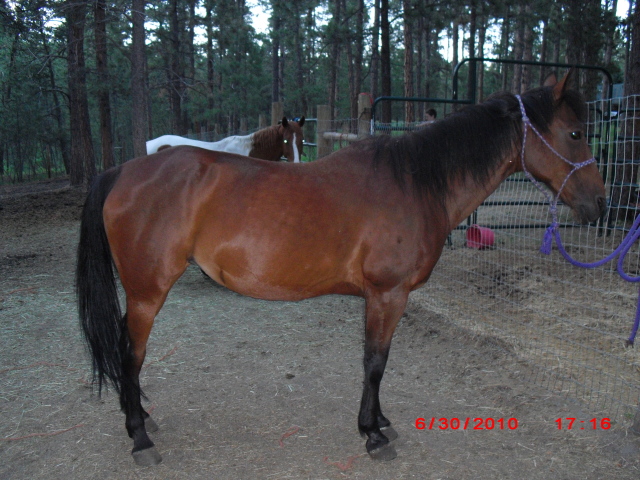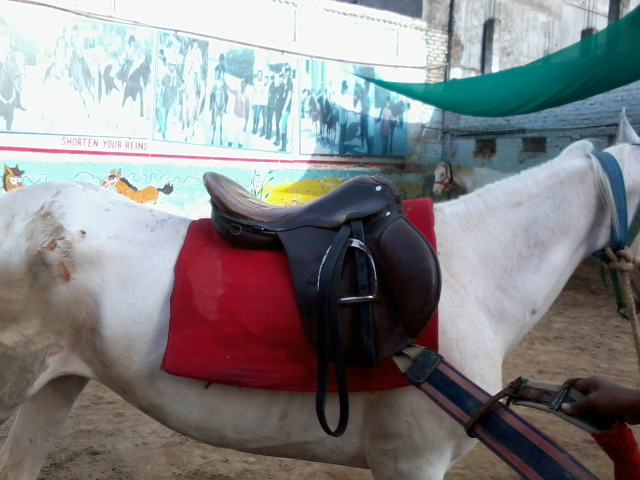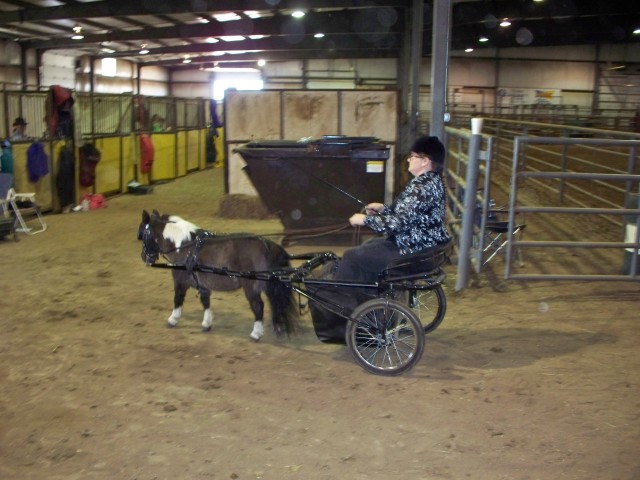QuestionHi, We recently purchased a pony for my daughter, he is 14 years old, a Welsh Sec A and stands at 12hh. He has been very successful at county level showing in particular Working Hunter. Prior to purchase we had him vetted and he failed (only slightly) on a front leg flex test. It was also noted he had wind galls but one front leg was worse (the leg that failed the flex test). Before making a decision, we got the vet to take x-rays of the leg and they did not show anything significant so we decided to purchase him. Four months on he has twice gone lame on the leg in question, and the last time although the lameness started in the front leg the vet then picked up that he was lame in his hind leg and had a swelling on his hock (in a very similar place a bog spavin would develop although vet said it was not a bog spavin). He was put on box rest and 4 x-rays were taken of the hock area as the vet was not certain if the swelling was coming from the ligament running over the tendon or the joint itself. The x-rays came back clear no shadows or bone fragments. After 2 weeks box rest he is still stiff in that leg (predominantly worse in walk than trot) and the swelling had not gone down. He also seems stiffer when tacked up then when walked in hand. No bloods or temperature have been taken and there has not ever been any heat in the area of swelling. He is not lame but stiff so vet ruled out blocking. However, when being ridden he does go lame but next morning in hand trots up fine. The vet has had me lunge on hard and soft ground and he remains sound. The vet decided to drain the swelling yesterday and pop a little cortisone in the leg. Hardly anything came out. He has said to give him 2 days rest then start working him again, and to give him an update next week but if no better is going to scan leg. I have heard negative things about cortisone based on what info I have provided you with do you think I have done the right thing. We are not wealthy people and I am absolutely petrified I am making a mistake. My daughter is 6 years old, adores her pony and has been mainly competing in show jumping and showing as well as general pony club activities. I lunge the pony twice a week. Please do ask if you need more information. Looking very forward to hearing from you.
AnswerJulie:
In the eyes of a performance horse veterinarian, the pony has not recieved enough diagnostic evaluation. I disagree with your vet that the limb should not be blocked. Furthermore, if he or she does not feel blocking would be helpful to change the "stiffness" then the horse can be ridden as it is lame with a rider and blocked concurrently. The swelling you have mentioned may not be the problem. This pony could have a joint problem even though you said the radiographs were normal, could have a suspensory problem- especially high suspensory or other soft tissue problem affecting tendons or ligaments. You will not be able to determine this without blocking the horse specifically using nerve AND specific joint blocks. I do not believe it is time to consider a bone scan if thats what scan you were referring to. The manual diagnostics have not even been evaluated enough for you to know with any certainty what parts of the pony should be scanned. However, once blocked, an ultrasound scan may well be very much in order and maybe more radiographjs if the pony were to block out in a joint you have not radiographed yet, such as the stifle. High suspensory injuries are common in jumping horses. I think this needs to be ruled out specifically. A hock lameness is still possible too, as there do not have to be xray changes for there to be a problem. Indeed, i was just involved in a case of a jumper that exhibited stiffness only much like your pony, that was localized to the hock. Radiographs were normal in appearance, but a bone scan strongly suggested a hock problem. MRI was done and a fracture of the central tarsal (hock) bone was found. This is a pretty uncommon fracture, but the story underscores the fact that negative xrays do not assure there is no problem in the joint radiographed. In my hands, I start on the pony by complete re-evaluation and nerve and joint blocks if there is any way under the sun to do so.
As far as the steroid. In a word, steroids have gotten a very bad rap for no particular good reason. They are only a concern if their use is irresponsibly applied. That means that very high doses in highly frequent intervals of administration. Your horse has recieved 1 dose only. Furthermore, steroids are very important anti-inflammatory drugs and their use helps control inflammation and indeed the progression of disease. They just need to be used judiciously. You may have recieved information on steroids from sources that dont really understand the drug. In the hands of a good and responsible vet, they are not only safe, they are extremely important tools for the managment of joint and other types of inflammation.
I hope this info helps some. Feel free to contact me again if you have other questions.

 Mystery Mare
Question
Bay Mare
Hi there, I was curious if you could
Mystery Mare
Question
Bay Mare
Hi there, I was curious if you could
 Kaves Ankle Injury
QuestionQUESTION: Hi Anne,
Yes I did hear back from Dr
Kaves Ankle Injury
QuestionQUESTION: Hi Anne,
Yes I did hear back from Dr
 posting slightly at canter
Question
marina
hello Dorothy. when i was trotti
posting slightly at canter
Question
marina
hello Dorothy. when i was trotti
 saddle laid correctly
Question
saddle laid
hello Lyn, is this saddle l
saddle laid correctly
Question
saddle laid
hello Lyn, is this saddle l
 Mini Horse Training
QuestionToughy the mini
QUESTION: Hello (again!)
Mini Horse Training
QuestionToughy the mini
QUESTION: Hello (again!)